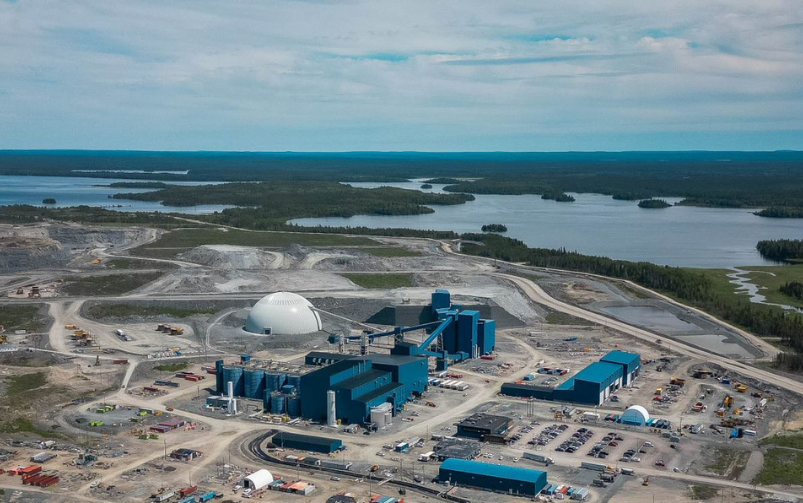The 2024 budget outlines new measures that aim to support Indigenous economic reconciliation and facilitate partnerships in the natural resources sector. Chris Desort via Unsplash.
Welcome back to your weekly mining news recap, where we catch you up on some of the news you may have missed. This week’s headlines include peaks and valleys for big iron ore producers, the U.S. blocking Ambler Road and Vale hitting a renewable energy milestone.
In the 2024 budget, which was released on Tuesday, the federal government is planning to fast-track the country’s mine permitting and impact assessment processes, while also encouraging more Indigenous participation in mining through an investment of up to $5 billion in a loan guarantee program. This initiative will be managed by Natural Resources Canada, which will also receive $3.5 million over the next two years to aid in capacity funding for Indigenous communities who may require assistance with loan applications.
Police made multiple arrests and laid 19 charges in relation to the theft last spring of $22.5 million in gold and cash from Toronto Pearson International Airport, which has been called the largest gold heist in Canadian history, as reported by CBC News. Two former Air Canada employees are alleged to have played key roles in the theft from the airport’s cargo compound. According to Mining.com, Swiss bank Raiffeisen Schweiz Genossenschaft and precious metals refining company Valcambi SA hired Brink’s Canada to transport 400 kilograms of pure gold and $2.5 million in foreign currencies from Zurich to Toronto. Brink’s is now suing Air Canada for allowing the theft to occur.
Avalon Advanced Materials has launched a preliminary economic assessment of its lithium refinery project in Thunder Bay, as reported by Northern Ontario Business. If it goes forward, the refinery would convert lithium concentrate into a lithium hydroxide product used by electric vehicle battery manufacturers. Avalon has said the plant would be supplied with feed from the company’s Separation Rapids deposit north of Kenora, but it is also exploring the possibility of developing the refinery as a processing hub for other potential lithium miners.
The U.S. Department of the Interior has decided against allowing a road-building project to major copper and zinc deposits in a remote area of Alaska, as reported by Politico. The Ambler Road project, initially approved by former President Donald Trump before he left office, has faced major pushback from Indigenous tribes in interior Alaska and hunting and angling groups, as it would cross hundreds of rivers and streams, a national park and the tribal lands of several Indigenous communities in the state, as well as potentially impacting subsistence hunting and fishing.
Rio Tinto and Vale reported their first-quarter iron ore shipments this week, with Rio recording a dip while Vale’s shipments and sales jumped, as reported by Engineering News and Reuters. Rio Tinto said weather disruptions at ports decreased stock drawdown and impacted production at its Western Australia iron ore mines, leading to 78 million tonnes of shipments for the quarter, a five per cent year-on-year decline. Brazil-based Vale, meanwhile, saw a 6.1 per cent increase in iron ore production when compared to the same quarter last year, to 70.84 million tonnes, thanks to higher production from its S11D mine in northern Brazil.
Barrick Gold shared preliminary figures for the first quarter of this year, reflecting that the company produced 940,000 ounces of gold and 40,000 tonnes of copper, as reported by Engineering News. Barrick attributed the decrease in its gold production as compared to the preceding quarter to scheduled maintenance at Nevada Gold Mines, along with adjustments made in mine sequencing at several of its sites.
Vale announced that it has passed its goal of achieving 100 per cent of renewable energy usage at its Brazilian operations ahead of schedule, as reported by Engineering News. All of the electricity used in the company’s facilities in Brazil last year was sourced from a combination of solar, wind and hydroelectric power, hitting this target two years earlier than planned. The company is still seeking to shift to renewable energy to power all of its global operations by 2030.
To keep up with the mining industry’s decarbonization efforts, some underground mines are targeting cemented paste backfill (CPB) as an area to reduce their carbon footprint, wrote Lynn Greiner in the March/April issue of CIM Magazine. As cement production is responsible for about five to eight per cent of worldwide CO2 emissions, one key way to cut back could be to switch the binder in CPB from general use cement to alternative cementitious products, such as limestone filler, slag sourced from steel plants or fly ash from coal power plants.
That’s all for this week. If you’ve got feedback, you can always reach us at editor@cim.org. If you’ve got something to add, why not join the conversation on our Facebook, Twitter, LinkedIn or Instagram pages?




